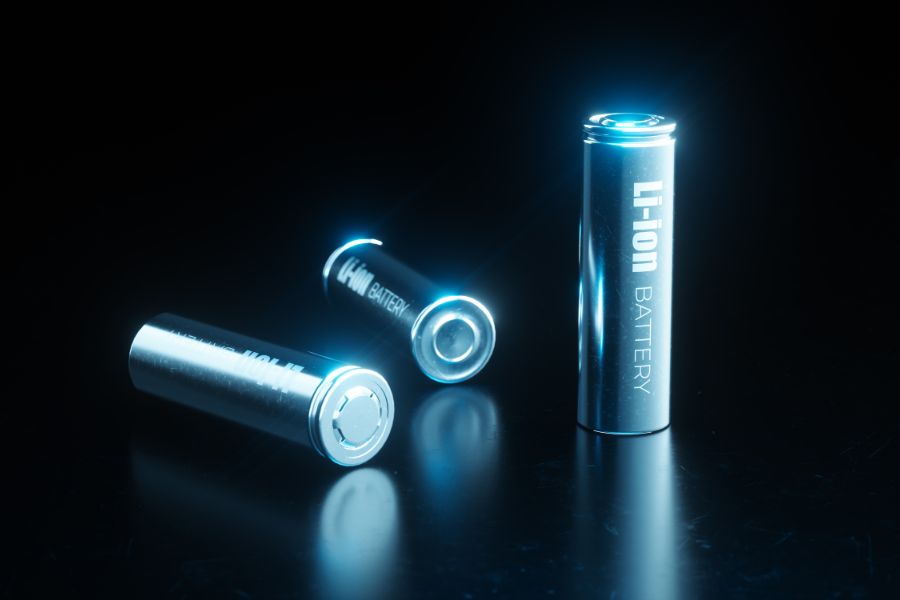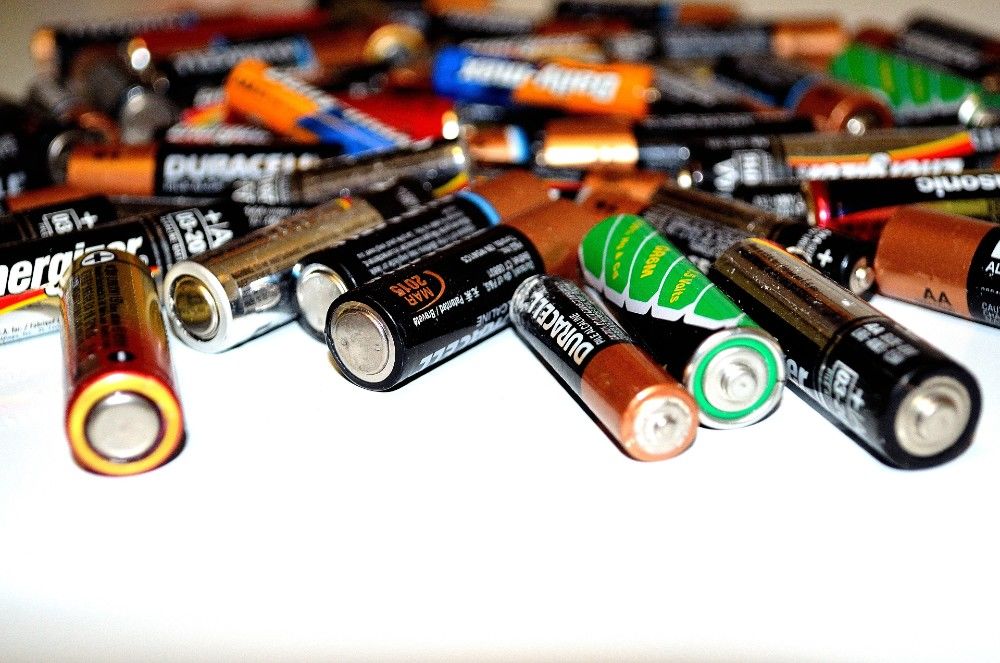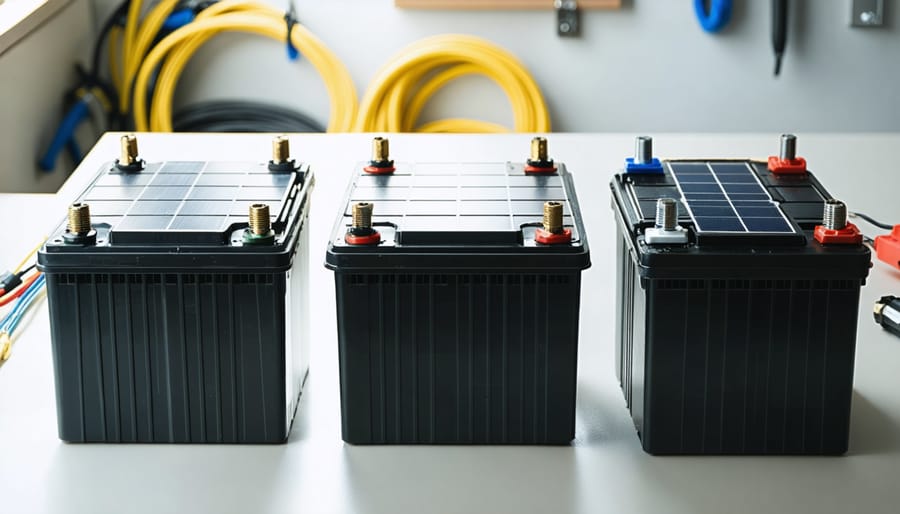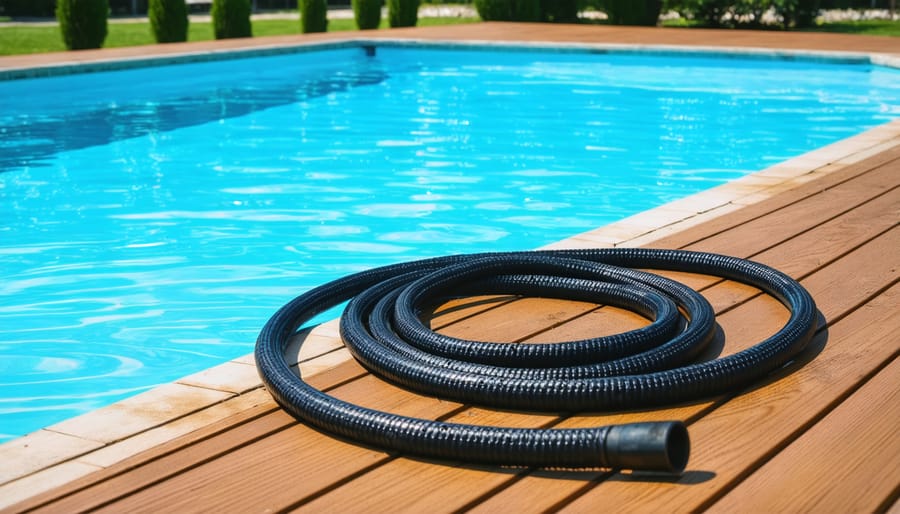Sodium Ion vs Lithium Batteries
Updated:

Sodium ion batteries (NIBs) vs lithium ion batteries (LIBs) are two of the most promising battery technologies for a wide range of applications.
Sodium ion (Na ion) batteries are cheaper and more eco-friendly than lithium-ion (Li-ion) batteries. However, they don’t hold as much energy or last as long in charge cycles. They’re suitable for big storage projects but aren’t ready to replace lithium-ion in gadgets and electric cars yet.
This article dissects the critical differences between Sodium Ion and Lithium Ion batteries, exploring their pros, cons, and ideal applications.
How Do Sodium Ion and Lithium Ion Battery Chemistries Compare?

The fundamental working principles of sodium ion and lithium-ion batteries are very similar. Both use:
- A negative electrode (anode)
- A positive electrode (cathode)
- An electrolyte allows ions to flow between electrodes
- A separator prevents the electrodes from touching
The key difference lies in the metal ions utilized – sodium ions vs lithium ions.
Lithium’s small size and light weight let batteries pack more energy. The small lithium-ion moves fast in the battery, making it efficient.
On the other hand, sodium is plentiful, cheaper, and easier on the environment compared to limited lithium resources. Both have their pros and cons when it comes to their chemical makeup.
Anode Materials
Graphite is the most common anode material for sodium ion-based battery types and lithium-ion cells. During discharge, the metal ions intercalate between the graphene layers in the graphite structure.
Lithium ions have a very small ionic radius, allowing them to fit between the graphene sheets easily. This enables more lithium ions to be stored in the graphite, resulting in higher capacity.
Sodium ions have a larger ionic radius, so fewer can fit between the graphene layers. Because of this, sodium-ion batteries don’t store as much energy as lithium-ion batteries.
Cathode Materials
Many lithium-housing oxide materials have been developed as cathodes, such as Lithium cobalt oxide and Lithium iron phosphate.
Trying to swap lithium with sodium in certain materials hasn’t worked as well. The bigger sodium ions don’t fit into the layers as efficiently. The larger sodium ions do not intercalate as well.
Instead, unique cathodes for sodium-ion batteries have been used, including:
- Layered Oxides: Sodium nickel oxide is one example of a layered oxide used in sodium-ion batteries.
- Polyanion Compounds: Sodium iron phosphate is a polyanion compound viable in these batteries.
- Prussian Blue Derivatives: Compounds like sodium iron hexacyanoferrate fall under this category and are used in sodium-ion batteries.
While lower in energy density than lithium cathodes, these materials can still offer decent capacity and voltage.
Electrolytes
Both types of batteries frequently use electrolytes made from metal hexafluorophosphate dissolved in organic solvents. The metal can be Lithium or Sodium based on the battery type. Additives like fluoroethylene carbonate are also added to stabilize the electrodes.
Generally, Lithium fits better into most battery materials because it’s smaller. But sodium-ion batteries can still do pretty well if they use special materials made for bigger sodium ions.
What Are the Key Differences in Performance?
With the fundamentals covered, let’s compare some key performance differences between the two battery technologies:
Energy Density
Lithium-ion batteries provide over twice the volumetric and gravimetric energy density of current sodium-ion batteries.
For example, commercial 18650 lithium cells reach over 500 Wh/L and 200 Wh/kg compared to about 250 Wh/L and 90-150 Wh/kg for the best sodium cells available.
Quick Note:
here’s what the units used above mean:
- Wh/L (Watt-hours per Liter): This unit measures how much energy can be stored in a given volume.
- Wh/kg (Watt-hours per Kilogram): This unit gauges the energy storage capacity per unit weight.
Cycle Life
Early rechargeable Na batteries delivered only 100-200 cycles, but current versions achieve over 1000 cycles. Still, they fall short of the 5000+ cycles seen in commercial Li-ion batteries.
Safety
Sodium-ion batteries operate at lower voltages and use more stable materials. This provides an inherent safety advantage over lithium-ion batteries.
Low-Temperature Operation
Sodium-ion batteries perform well in the cold, almost keeping their full charge even when the temperature drops to -20°C.
In contrast, lithium-ion batteries struggle in the cold. They can lose up to 50% of their stored energy when the temperature goes below freezing.
Charging Speed
Both Li-ion battery and sodium-ion battery types can use fast charging protocols to achieve 80% capacity within 15-30 minutes.
Cost per kWh
Sodium-ion batteries can be cheaper because they use materials that are easier to find. They might cost between $60 and $80 for a 1 kWh (kilowatt hour) battery pack.
Lithium-ion batteries, on the other hand, are more expensive, usually costing more than $100 per kWh (kilowatt hour).
What Are the Main Applications for Each Battery Type?
Lithium Ion-Based Battery Applications

Thanks to their high energy density, lithium-ion batteries power nearly all mobile consumer devices:
- Smartphones – Allowing slim, lightweight designs and all-day runtime.
- Laptops – Enabling excellent portability and hours of use on battery.
- Power Tools – Providing cordless convenience without excess size.
- Electric Bicycles – Lightweight batteries extend range.
- Electric Vehicles – Large lithium-ion battery packs provide a 200+ mile range.
- Drones – Compact batteries maximize flight time.
Lithium-ion is also preferred for off-grid storage:
- Home Solar Energy Storage – High energy density minimizes system footprint.
- Grid Storage – Containerized lithium-ion systems balance renewable energy supply and demand.
Sodium Ion Battery Applications

While lithium-ion batteries dominate mobile applications, sodium-ion batteries are well suited for:
Stationary Storage
- Renewable Energy Storage: Large-scale Na-ion battery arrays can efficiently store excess solar and wind energy.
- Backup Power: Facilities that need dependable extra power or off-grid solutions can rely on sodium-ion batteries. They offer a resilient and cost-effective choice.
- Utility Support: Sodium-ion batteries are safe and long lasting, making them useful for utilities that need help balancing loads and keeping power frequencies stable.
Specialty Vehicles
- Low-Speed Vehicles: Vehicles like forklifts and golf carts that don’t need to go fast can save money using sodium-ion batteries.
- Boats and Submarines: Sodium-ion batteries are a good fit for underwater or sealed vehicles like submarines. They don’t have the same oxygen-related safety issues that lithium-ion batteries do.
Cost-Sensitive Applications
- Motorcycle Batteries: Sodium-ion batteries can replace lead-acid batteries in motorcycles, offering cost benefits over the long term.
- Affordable Home Storage: For homeowners with small energy needs, sodium-ion batteries offer a less expensive startup cost than lithium-ion batteries.
- Remote Energy Solutions: In isolated areas like islands and villages, sodium-ion batteries provide a cost-effective way to store electricity.
Lithium-ion batteries are still the top choice for everyday devices and electric cars. But sodium-ion batteries have their own strengths. They’re a good fit for certain uses where safety, saving money, and durability are more important than being small and light.
What Are Key Challenges to the Adoption Of Sodium Ion Batteries?
Sodium-ion batteries show promise for certain applications, but what hurdles must be overcome for full commercial adoption?
Energy Density
Sodium-ion batteries have lower energy density compared to lithium-ion batteries. However, there’s ongoing research focusing on advanced cathode and anode materials to bridge this gap.
The aim is to make sodium-ion batteries more competitive, especially in applications where high energy density is crucial.
Degradation
Sodium-ion batteries face the issue of faster capacity fade, which limits their lifespan. New formulas for the electrolyte in sodium-ion batteries are showing good results, but more study is needed.
The aim is to make these batteries last as many charge cycles as lithium-ion batteries, making them just as dependable for long-term use.
Scale
Lithium-ion batteries benefit from a well-established, large-scale manufacturing process. Sodium-ion batteries lack this advantage.
Developing a production ecosystem from scratch for sodium-ion batteries is a significant challenge and will require time and investment.
Supply Chain
Sodium is abundant, but the supply chain for high-quality, battery-grade sodium is still in the early stages.
Specialized mining and processing facilities are needed to ensure a consistent and reliable supply of materials for sodium-ion batteries.
Cost
Currently, sodium-ion batteries are mostly assembled by hand in labs, making them expensive.
Transitioning to automated production is crucial for cost reduction and to make these batteries economically viable for large-scale applications.
Testing
New quality tests and safety rules designed for these batteries are essential to build trust and encourage more people to use sodium-ion batteries. This is a crucial part of making them a mainstream option.
The technology for sodium-ion batteries is getting better but still needs work in many areas. This includes basic research, how to make the batteries on a large scale, and setting up a reliable system for getting the materials needed.
Is Sodium Ion Mature Enough for Commercial Use?

With several companies announcing plans for production, let’s analyze the current state of sodium ion technology.
- Performance: Small improvements continue, but intrinsic limitations relative to lithium may persist. Energy density above 200 Wh/kg would be a significant milestone.
- Manufacturing: Pilot production lines are running, but processes need refinement. Full automation and quality control aren’t yet at lithium-ion levels.
- Supply Chain: While sodium is abundant, battery-grade materials must become available at scale to enable mass production. This infrastructure requires significant investment.
- Applications: Prototypes show promise for initial stationary and speciality vehicle markets. Performance isn’t yet sufficient for mass consumer electronics or most electric cars.
- Adoption: Some OEMs are convinced and planning products. But most major device and EV makers will wait for more proof points before designing around sodium-ion batteries.
In short, sodium-ion batteries are at an early stage of commercialization. They don’t yet threaten lithium ion dominance outside of select applications.
Will Sodium Ion Replace Lithium Ion?
Lithium-ion batteries are the current favourite for most tech needs, from powering your smartphone to running electric cars. This trend doesn’t look like it’s going to change anytime soon.
However, sodium-ion batteries are also improving and could start showing up more in certain situations.
Here are the top issues that will determine whether Sodium-ion batteries will eventually replace Lithium-ion batteries.
- Still More Energy in Lithium Ion: Li-ion batteries keep improving, especially when packing a lot of energy into a small space. This makes them great for things that need a lot of power but don’t have a lot of room, like electric cars or portable gadgets.
- Chemical Limits of Sodium Ion: Na ion batteries can’t store as much energy as lithium-ion batteries, primarily due to how their chemicals work. This makes them less useful for high-energy needs.
- Lithium’s Supply Chain Issues: The demand for lithium is increasing, causing supply problems. Sodium-ion batteries could fill in the gaps here. They can be especially useful for large-scale energy storage, like saving up solar or wind energy for later use.
- Diversifying with Sodium: The more types of batteries we use, the less the risk of problems if one type becomes hard to get. Sodium-ion batteries could help make the system more stable and less dependent on specific materials.
Sodium-ion batteries are not going to replace lithium-ion batteries completely. But they are good for specific uses and can work alongside lithium-ion batteries for those tasks.










